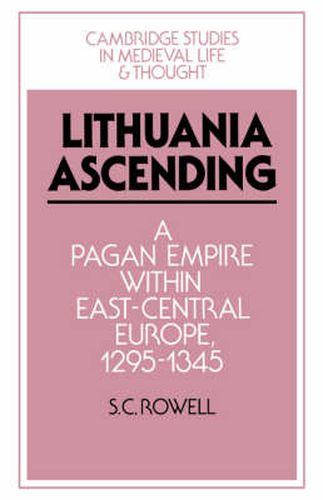Readings Newsletter
Become a Readings Member to make your shopping experience even easier.
Sign in or sign up for free!
You’re not far away from qualifying for FREE standard shipping within Australia
You’ve qualified for FREE standard shipping within Australia
The cart is loading…






From 1250 to 1795 Lithuania covered a vast area of eastern and central Europe. Until 1387 the country was pagan. How this huge state came to expand, defend itself against western European crusaders and play a conspicuous part in European life are the main subjects of this book. Chapters are devoted to the types of sources used, to the religion of the ancient Balts (and the discovery of a pagan temple in Vilnius in the late 1980s), and to Lithuanian relations and wars with Poland and the Germans. Under Grand Duke Gediminas, Lithuania came to control more of Russia than the prince of Moscow and, though pagan, competed with Moscow to gain a special church structure. Many of the general crises in this book have a familiar ring: crusade, famine, collapse of central authority in the German empire and the papacy. In this deeply-researched and highly original study the middle ages emerge as interesting and as varied as our own times.
$9.00 standard shipping within Australia
FREE standard shipping within Australia for orders over $100.00
Express & International shipping calculated at checkout
From 1250 to 1795 Lithuania covered a vast area of eastern and central Europe. Until 1387 the country was pagan. How this huge state came to expand, defend itself against western European crusaders and play a conspicuous part in European life are the main subjects of this book. Chapters are devoted to the types of sources used, to the religion of the ancient Balts (and the discovery of a pagan temple in Vilnius in the late 1980s), and to Lithuanian relations and wars with Poland and the Germans. Under Grand Duke Gediminas, Lithuania came to control more of Russia than the prince of Moscow and, though pagan, competed with Moscow to gain a special church structure. Many of the general crises in this book have a familiar ring: crusade, famine, collapse of central authority in the German empire and the papacy. In this deeply-researched and highly original study the middle ages emerge as interesting and as varied as our own times.